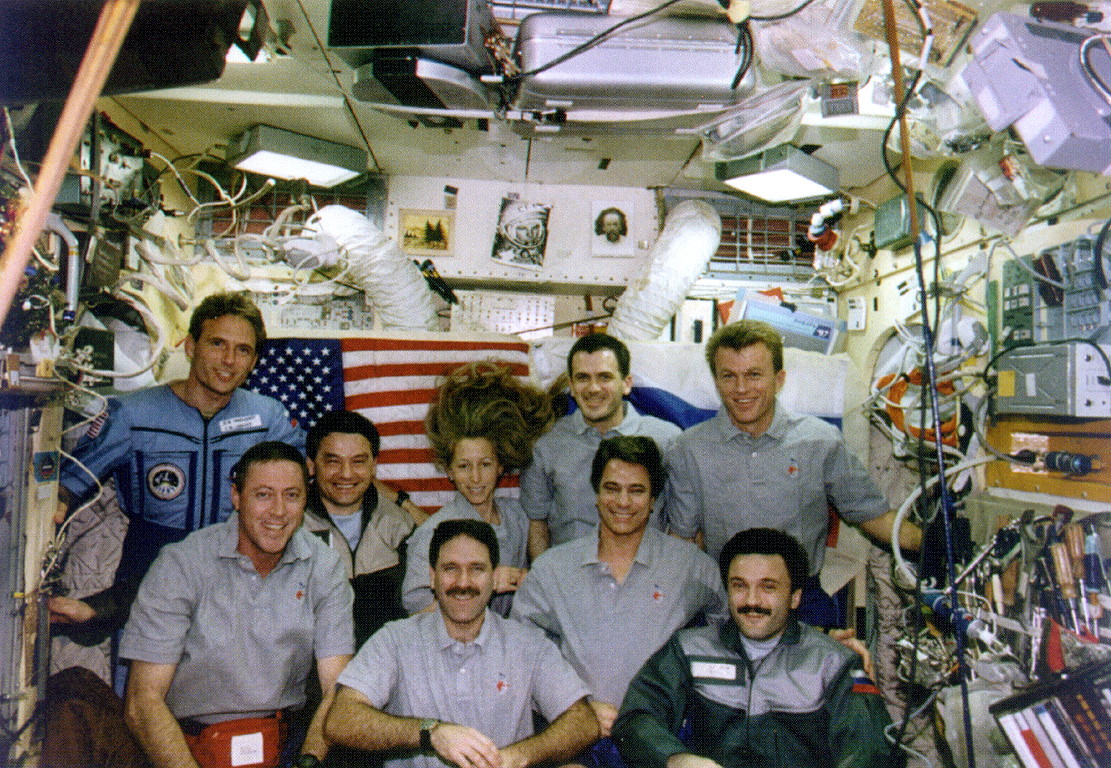
Twenty years ago, this week, America’s shuttle program began living up to its billing as a vehicle for delivering experiments, equipment, and supplies to an Earth-circling space station. In the small hours of 12 January 1997, Atlantis roared aloft on a mission to exchange long-duration U.S. astronauts aboard Russia’s Mir orbital outpost and to transport upwards of 6,100 pounds (2,800 kg) of logistics in a pressurized Spacehab double module. During STS-81—as described in yesterday’s AmericaSpace history article—astronaut Jerry Linenger was dropped off at Mir and John Blaha returned to Earth in his stead, whilst the “core” shuttle crew of Commander Mike Baker, Pilot Brent Jett, and Mission Specialists Jeff Wisoff, John Grunsfeld, and Marsha Ivins, and the station’s own crew of Russian cosmonauts Valeri Korzun and Aleksandr Kaleri supported one of the most complex and ambitious joint flights ever attempted.
By this stage, Blaha had spent four months aboard Mir and had become acclimatized to living in the space environment. “We’re truly in the space station business,” Blaha said at one point, as he entered the final days of his long mission. He devoted a great deal of time to working with Linenger and readying him for his own lengthy stay. In the weeks preceding Linenger’s arrival, Blaha had spent his free time tapping out emails to NASA colleagues on Earth and updating the handover for his successor. With Linenger now aboard Mir, Blaha spent several hours with him each evening. Their discussions varied from the technical to the mundane—but necessary—everyday tasks.
“During my first few days on Mir,” Linenger reflected in his 2000 memoir, Off the Planet, “John and I had many private conversations, tucked away in a corner of the station. We went through how the toilet works, how the treadmill works and he did his routine. He explained in detail how he cleaned himself after working out on the treadmill; there’s a trick to it. Water is in short supply up there and therefore you need to use two or three thimblefuls, which you put on a little towel. He would cut the towel into about five or six sections to conserve towels, because there’s no way to keep delivering new towels. He showed how you can make a couple of thimblefuls of water go a long way. Sanitation was not an easy task up there. During your treadmill sessions, you would definitely be sweating and our T-shirts would get soaked. Our supply of shirts and shorts was such that we could only change every two weeks!” Linenger added that Blaha’s “unalloyed frankness” and “uncensored remarks” were invaluable in allowing him to fine-tune his own mindset for four months aboard Mir.
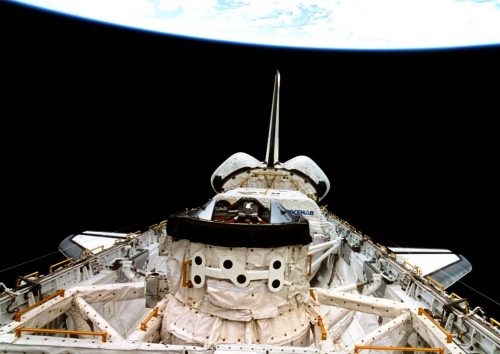
In the meantime, transfers between the shuttle and the station continued, in addition to ongoing research work inside the Spacehab double module. The “loadmaster” was Marsha Ivins, whom Linenger described as having the daunting task of knowing where everything was stowed aboard the orbiter. “She ruled with an iron fist,” wrote Linenger. “She demanded that every item be in its proper place.”
Yet Ivins was shocked by the clutter of Mir and at one stage, floating through the station’s Kvant-1 module in search of the Progress M-33 cargo craft at its aft end, she became lost in a maze of garbage bags and broken equipment. One of the greatest ironies in her mind was that Kvant-1 was originally designed as an astrophysics module; now, after 10 years in orbit, far from being filled with high-powered spectrometers and telescopes, it was a foul-smelling, engorged attic.
Blaha and Linenger stowed a crop of wheat from Mir’s Svet greenhouse aboard the orbiter to be returned to Earth, marking the first time that plants had completed an entire growth cycle in space. They also planted a fresh crop for Linenger’s expedition.
On 17 January, Baker and Jett pulsed Atlantis’ thrusters to gather acceleration and vibration data for future International Space Station (ISS) operations and to support the Mir Structural Dynamics Experiment (MiSDE) and Space Acceleration Measurement System (SAMS). They also began powering down several non-essential orbiter systems, in the hope of squeezing an additional day onto their 10-day mission. That additional day, if approved, would be added to the post-undocking phase of the flight and was requested following problems with the storage of data from the Treadmill Vibration Isolation and Stabilization System (TVIS) onto a faulty laptop computer. The Mission Management Team (MMT) convened on the 18th to consider the extra day, but deferred their decision until the 20th, until it was known if the data collection could be completed within the framework of the existing flight plan.
Living and working aboard Mir was a joyful experience, aside from the hard work. John Grunsfeld likened it to “exploring a cave,” and Jerry Linenger compared it to something not unlike an old, musty wine cellar, with its warren of cluttered passageways. For his part, Brent Jett remembered some advice from Aleksandr Kaleri: he should follow a line which ran through Kristall and offered a translation aid to “swim” through bowels of the narrow module. “The Kristall is kind of like their attic,” Jett said later. “They put a lot of extra equipment there, but then, once you got into the [multiple docking adapter] and then into the base block, it’s a lot more like what you would expect for a station.”
At times, the two crews would assemble for joint meals, as remembered by Jeff Wisoff. “It’s customary when the shuttle docks that the crews have a big meal together,” he explained in a Smithsonian interview, “and when our STS-81 crew arrived, the cosmonauts had recently had a supply ship come up. They had a big round ball of cheese and they had a fresh salami, or summer sausage. They had an axe and they were chopping this thing up and tossing out pieces to us. It was like being in a space deli.” At other times, Mir’s crew was welcomed aboard Atlantis, and enjoyed barbecue and red beans with rice, together with shrimp cocktail and chocolate cake. Linenger celebrated his 42nd birthday on 16 January and Marsha Ivins brought up an inflatable cake. “That was a very fun occasion,” remembered Wisoff.
After the flight, Baker remembered the warmth of the greeting aboard Mir, especially from Korzun, who always offered him coffee or fruit juice, whenever he entered the station. For their part, Atlantis’ crew brought up fresh oranges and grapefruits, together with small flashlights to alleviate the station’s chronic lighting shortages.
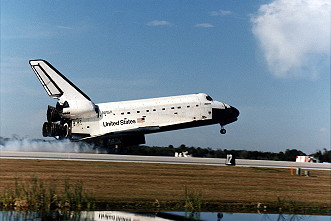
After five days of joint activities, the hatches between Atlantis and Mir were closed at 7:46 a.m. EST on 19 January 1997. Following depressurization and a good night’s sleep, the shuttle undocked from the station at 9:15 p.m. EST. Wisoff executed the undocking command from the aft flight deck. Now in independent flight, the crew reassembled TVIS in the middeck and the treadmill was used by Baker, Jett, and Blaha, acquiring the required data to render it a success. The additional day was declared unnecessary and Atlantis remained on track to land at the Kennedy Space Center’s (KSC) Shuttle Landing Facility (SLF) on the 22nd, after 10 days in orbit.
In their final days, the astronauts wrapped up the remainder of their scientific research aboard the Spacehab double module and tested a medical restraint system, which might someday be used aboard the ISS to move a sick or injured crew member from one module to another. They also had the opportunity for some Earth photography. One particular landmark was the Norfolk Beach area of Virginia, where Wisoff had grown up. The area around Cape Hatturas and the Chesapeake Bay was also well-known to Baker and Jett, who had spent time there as Navy test pilots, flying out of the Naval Air Test Center, earlier in their careers.
An enormously successful mission ended with an enormously successful landing. Having been waved-off by one orbit, due to forecast and observed unacceptable cloud cover at KSC, Atlantis’ re-entry flight path carried the orbiter over British Columbia, near Vancouver, and then across Nebraska and the central United States, as it headed for Florida. Baker and Jett brought the shuttle smoothly onto Runway 33 at 9:23 a.m. EST on 22 January 1997, wrapping up a flight of just over 10 full days.
John Blaha completed 128 days in space, establishing himself as the most experienced U.S. male spacefarer to date and the second most experienced U.S. spacefarer of all time, after Shannon Lucid. Before his long mission, Blaha—a veteran shuttle commander—had discussed flying the Shuttle Training Aircraft (STA), immediately after landing, to evaluate his ability to land the orbiter after a lengthy stay in space. Blaha told Dave Leestma, then-head of the Flight Crew Operations Directorate (FCOD), that he could do it, but after landing the reality hit him. When he disembarked from Atlantis, Leestma had the STA ready to go, but Blaha was not ready to go.
“John, are you ready to do that?”
“Dave, the answer is no,” replied Blaha, “and even if I mentally wanted to, I physically could not do it.” In his NASA oral history interview, Blaha admitted to being perplexed: he had felt fine during his four months in orbit, and had felt fine during landing and rollout, but the cardiovascular and vestibular issues associated with a lengthy stay in microgravity soon took their toll on his body. “During entry on the real shuttle, I felt okay,” he admitted, “but, boy, after wheelstop, it was like all the connections came undone, which was a shocker to me, since I had never had any symptoms.” Leestma offered him the opportunity to do an STA approach later in the day, but even that proved impossible.
It was disappointing for Blaha, who was the only shuttle commander to fly a long flight to Mir, and it was two to three weeks before he felt “back to normal.” In his mind, the need for an astronaut to land a spacecraft would be essential for the first visitors to Mars, who would be required to travel for months in weightlessness, before entering a gravitational field to bring their vehicle down onto the surface of the Red Planet. “I don’t see a therapist there to work with you,” he said. “I don’t see a flight surgeon waiting for you to land on Mars. I don’t see a swimming pool for you to work out in for a month.”
And in Blaha’s mind, such problems of long-duration spaceflight needed to be resolved, before humans could begin their next steps deeper into the cosmos.
This is part of a series of history articles, which will appear each weekend, barring any major news stories. Next week’s article will focus on the 25th anniversary of STS-42, a January 1992 shuttle science mission which experienced tragedy and other changes of fortune, before its crew ever left the launch pad.
Be sure to “Like” AmericaSpace on Facebook and follow us on Twitter: @AmericaSpace




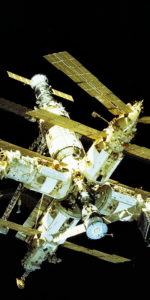
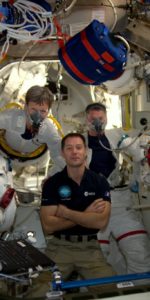
Blaha’s experience and perspectives point to the very real need to develop advanced propulsion before undertaking a Mars mission.